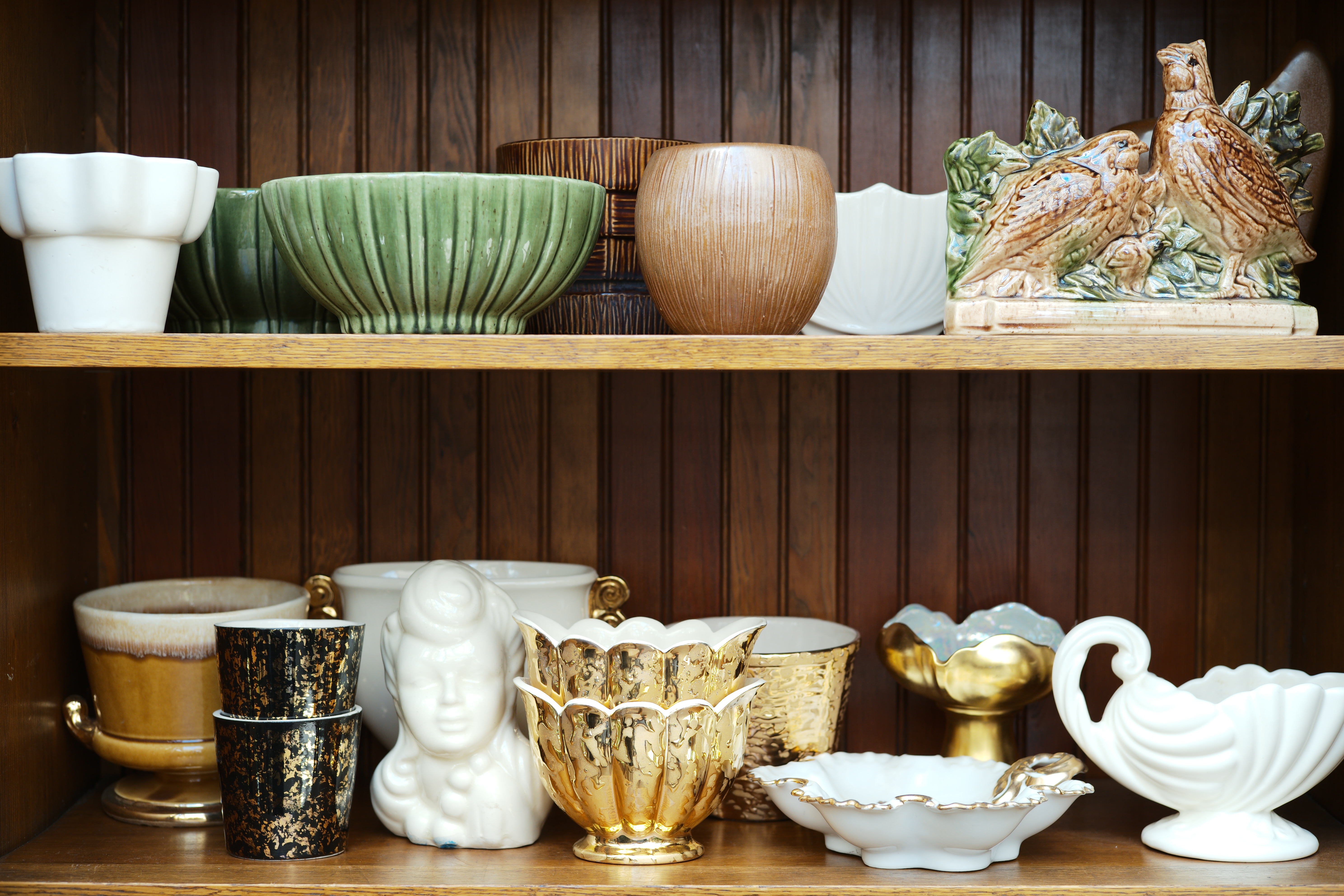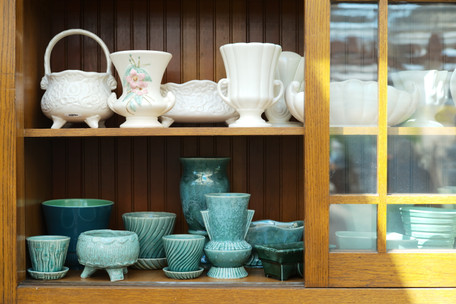vintage pottery
Posted by Megan Nichols on Aug 28th 2020
Vintage pottery, and especially vintage American-made pottery, has long had a strong following. It is now catching the attention of a new audience, the passionate plant parents who are styling their homes, and their plants, with vintage finds.
For the last year, Tonkadale has been collecting and curating vintage pottery in the greenhouse. Interest is catching on and growing like wild. The thrill of the hunt is half the fun. Finding that one of a kind piece that perfectly matches your plant to the plant to match your piece is what it's all about.
Vintage pottery utilizes goods that are already available, re-kindles fond memories of loved ones, and gives us all the feels.
Several pottery companies once operated in the US, some of which still do. Here’s more on some of the better known and loved companies.
McCoy

McCoy Pottery started operating in 1910 in Roseville, OH. The area had plenty of clay to harvest and the business was welcome for the jobs it would create. As with many pottery companies at that time, it began with a focus on utilitarian items, and only later began to include more decorative pieces based on what buyers were interested in. In keeping with functionality, however, even decorative McCoy pieces usually serve a purpose, whether it be as a bank, a vase, a flower pot, or more. McCoy closed it’s doors in 1990, but their pieces continue to be popular, one of the most recognizable being the pastel, art deco pieces.
Red Wing

Red Wing is especially popular around here as it’s not only a U.S. company but also a Minnesota company. Red Wing is rich with clay, and Red Wing Stoneware was established in the area in 1877.
The company has changed and grown along with the needs of it’s consumers over the years. It initially began by producing crocks and other storage items for farmers in the area. Later, as cities began to form their was a need for ceramic sewer pipe, so Red Wing Stoneware took on the endeavor. In the early 1900s the invention of the refrigerator began to lessen the need for food storage crocks, and the company turned more of it’s focus to decorative food storage, plates, and art pieces, among other decorative items.
The company has gone through several changes over the years, merging with or acquiring other companies, ceasing production of some products only to revive their production later. There have been several name changes, as well, but it is now settled on Red Wing Stoneware and Pottery.
There are artists currently working to create new pieces which can be purchased online, and there continues to be a steady business in acquiring and decorating with the old, well-loved, vintage pieces. The iconic Red Wing crocks are probably the most sought after pieces and easily demand a high price.
Weller

Weller pottery grew to employ 500 people within 30 years of it’s humble beginnings in 1877. That beginning consisted of founder Samuel Weller doing everything himself from start to finish. He harvested the clay, and threw, fired, and transported them, finishing by selling them door to door.
Over the years, Weller employed several incredibly talented artists who created some of the most intricate and beautifully hand painted pieces the company is known for. By the 1930s the company shifted to more simplistic designs, and the company closed in 1948 having had a hard time making a profit through the years of World War II.
Today, some of the most sought after items are the detailed animal and floral decorative pieces.
Hull
Hull Pottery was started in 1905 with utilitarian type pottery. In 1917 the company began producing more decorative pieces known as art pottery. Hull expanded quickly after inception, purchasing another local pottery company, building a 300 foot kiln, and purchasing European pottery to sell in addition to it’s American made line. The Great Depression put an end to Hull’s overseas purchases as they renewed focus on the local economy and workforce.
Haeger
Haeger pottery was founded by David Haeger in 1871 in Illinois, North of Chicago, in a clay-rich area on the Fox River. The company began it’s work by firing bricks used to replace and repair the many buildings destroyed by the great Chicago fire. David haeger passed in 1900, but he and his son, Edmund, had already started to transition the company from brick making to pottery.
In 1912 the company began creating a decorative pottery line, and continued to create beautiful pieces through the years.
1938 is the year Royal Hickman joined the company and created some of the most intricate and beautiful pieces with never-before-seen glazes that became known as the Royal Hickman line. To this day, these are some of the most sought after Haeger pieces.
Mix It Up With Vintage

Whatever your décor style, these U.S. companies have likely produced a piece that will catch your eye. Adding vintage items to your home creates unique character you won’t see duplicated anywhere else.

